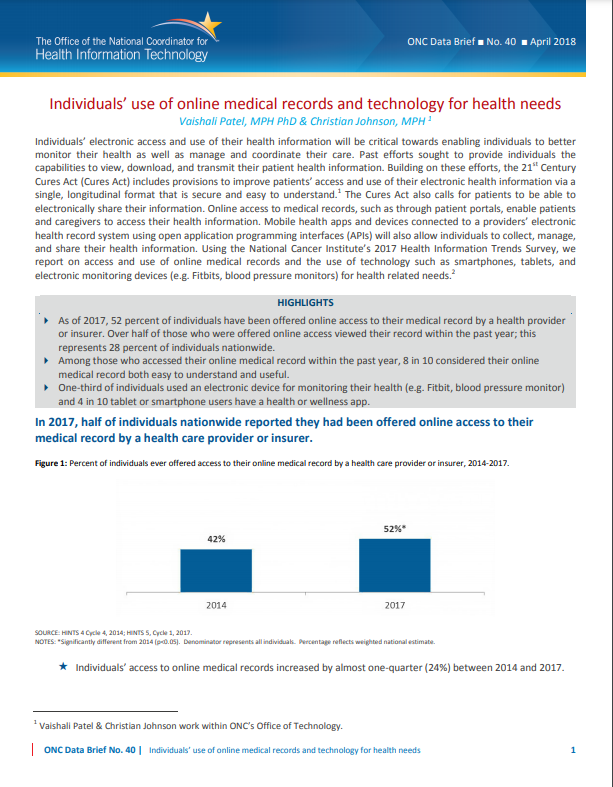
Online access to medical records, such as through patient portals, enable patients and caregivers to access their health information. Mobile health apps and devices connected to a providers' electronic health record system using open…
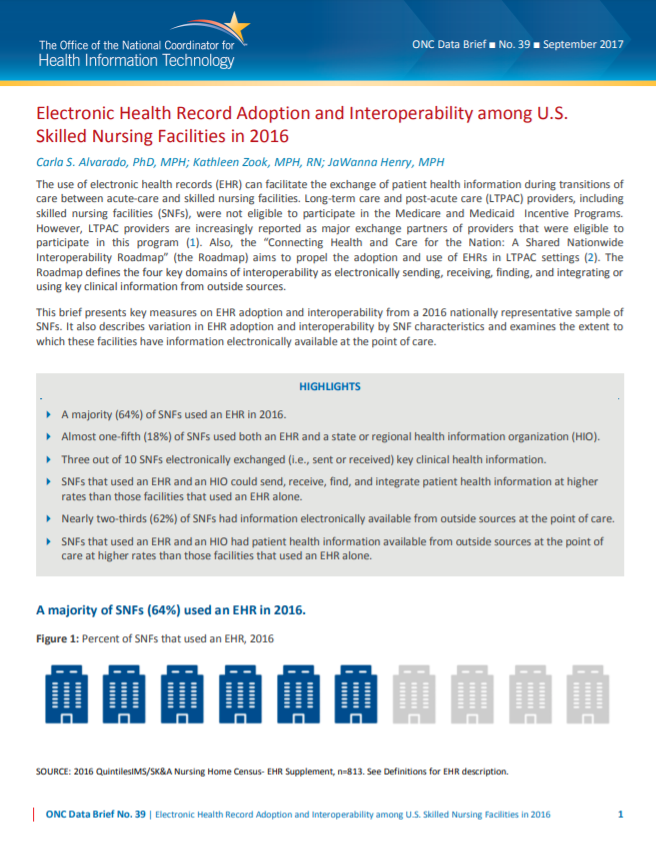
Electronic Health Record Adoption and Interoperability among U.S. Skilled Nursing Facilities in 2016
This data brief presents key measures on EHR adoption and interoperability from a 2016 nationally representative sample of skilled nursing facilities (SNF). It also describes the variation in EHR adoption and interoperability by SNF characteristics…
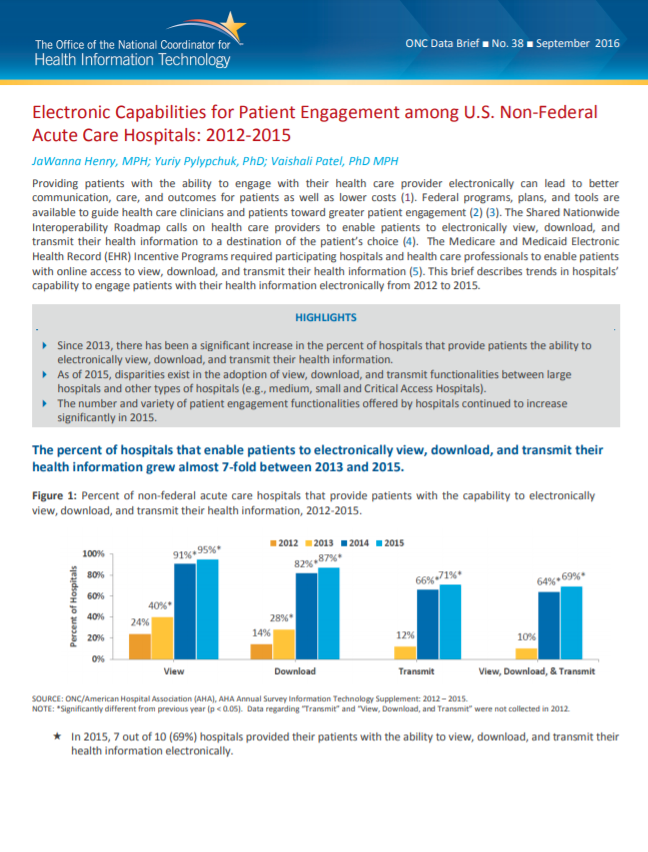
This ONC Data Brief describes trends in hospitals capability to engage patients with their health information electronically from 2012 to 2015. The percent of hospitals that enable patients to electronically view, download, and transmit their health…

This ONC Data Brief describes variation in interoperability across different types of hospitals, rates of exchanging information between hospitals and other types of providers, and mechanisms hospitals used to exchange information. .

Over 1 in 4 hospitals can electronically find, send, receive, and use key clinical information - an important metric for tracking interoperability. This brief presents the most recent estimates on the state of interoperable exchange activity among U…
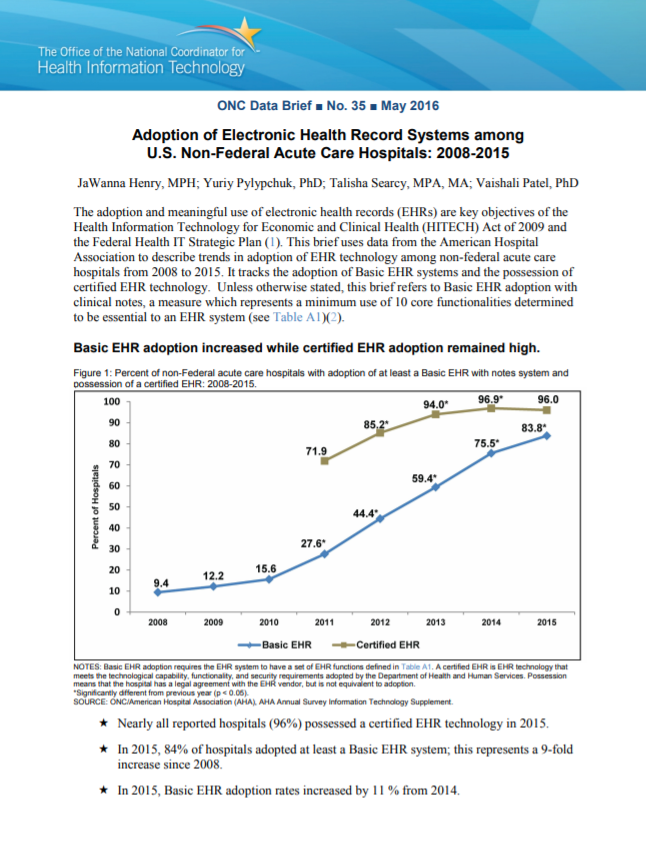
Nearly all hospitals have certified health IT and over 4 in 5 hospitals have at least a Basic EHR. This brief uses data from the American Hospital Association to describe trends in adoption of EHR technology among non-federal acute care hospitals…
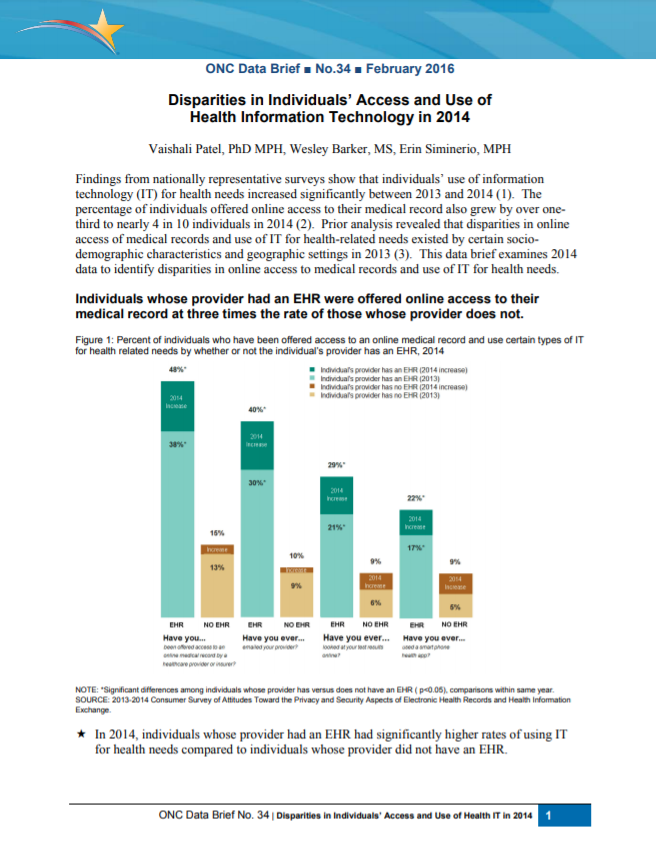
Findings from nationally representative surveys show that individuals' use of information technology (IT) for health needs increased significantly between 2013 and 2014. Prior analysis revealed that disparities in online access of medical…

Preserving patient trust in the privacy and security of health information is a critical element in achieving an interoperable health IT infrastructure. As adoption of certified health IT and electronic exchange of health information grows across…

As electronic health information becomes more widely available, proper security measures must be implemented to ensure the information is only accessible to those with the rights to access it. The Health Insurance Portability and Accountability Act…
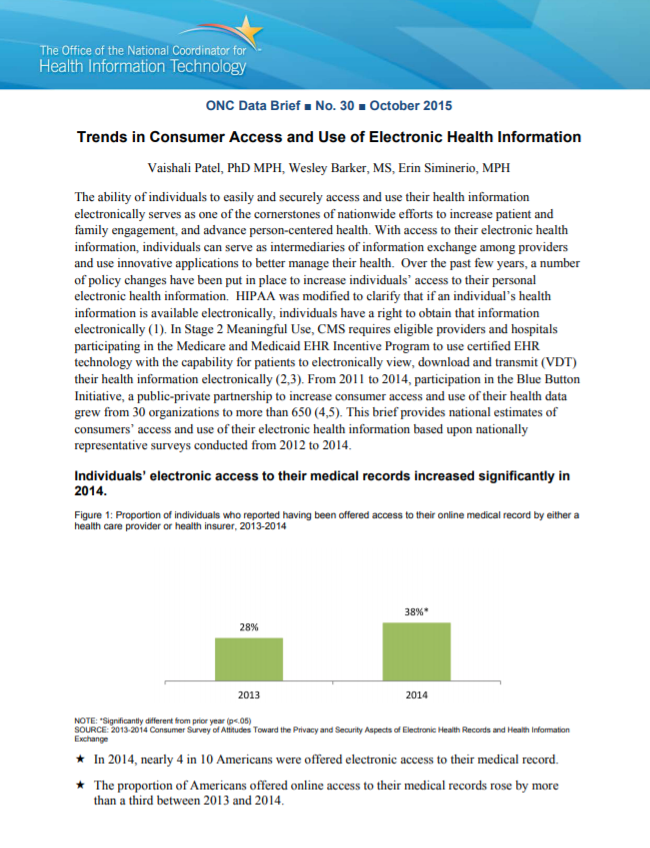
The ability of individuals to easily and securely access and use their health information electronically serves as one of the cornerstones of nationwide efforts to increase patient and family engagement, and advance person-centered health. With…
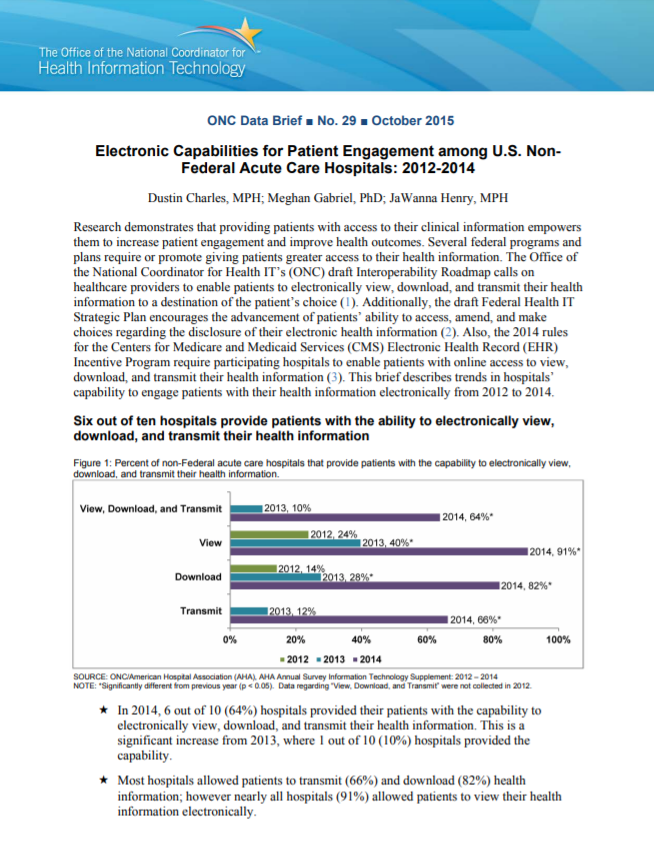
Research demonstrates that providing patients with access to their clinical information empowers them to increase patient engagement and improve health outcomes. Hospitals, which play a critical role in coordinating patient care with a variety of…
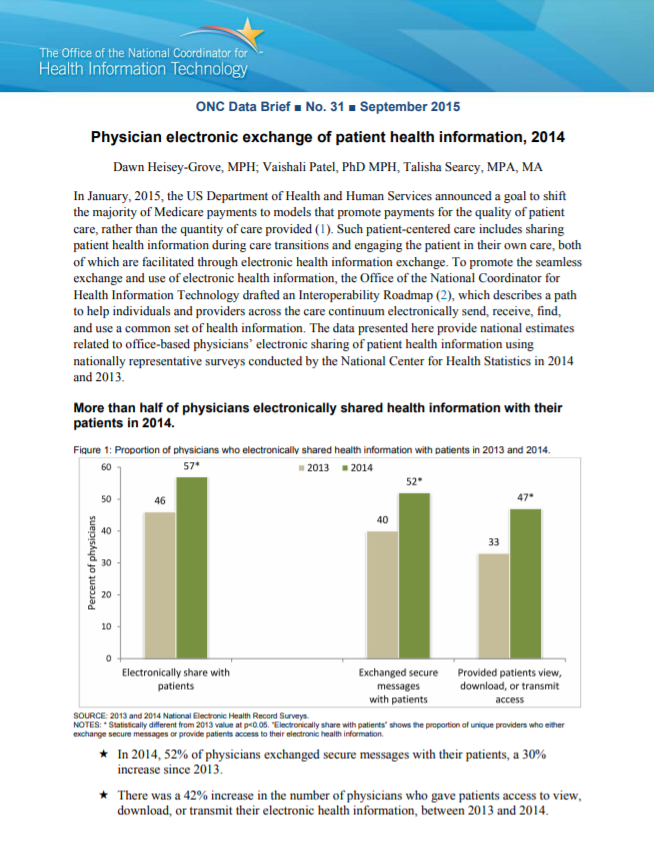
It is a national priority for a majority of individuals and providers along the care continuum to electronically send, receive, find, and use health information by 2017. Patient-centered care includes sharing patient health information during care…

Physician adoption of electronic health record (EHR) systems has increased substantially over the last decade. As a result, health information technologies (IT) have evolved to include functionalities that better address what physicians need. This…
![Individuals' Perceptions of the Privacy and Security of Medical Records [pdf]](/sites/default/files/2021-08/db-27.png)
To assess the growing impact of EHR adoption on individuals' privacy and security concerns, this data brief examines whether privacy and security concerns have increased with increased rates of EHR adoption between 2012 and 2013. .
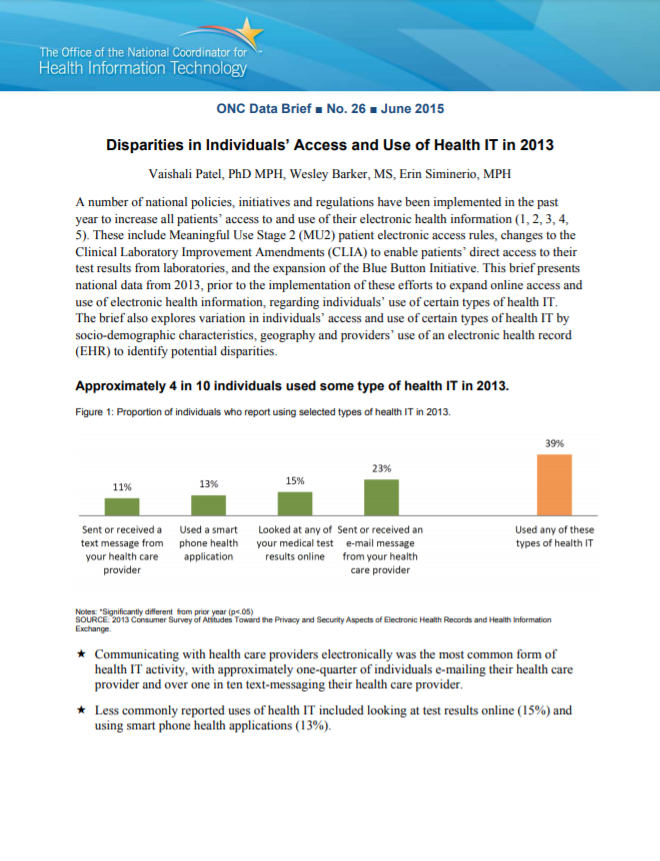
This brief presents national data from 2013, prior to implementation of Meaningful Use Stage 2 patient electronic access rules, changes to CLIA, and expansion of the Blue Button Initiative, regarding individuals' use of certain types of health…
![Interoperability among U.S. Non-federal Acute Care Hospitals, 2014 [pdf]](/sites/default/files/2021-08/db-25.png)
This brief presents baseline estimates on the state of interoperable exchange activity among U.S. non-federal acute care hospitals to electronically find, send, receive, and use health information from other systems. The brief also explores whether…

This brief updates analysis from 2013 and describes trends in electronic health information exchange among non-federal acute care hospitals from 2008 to 2014. In 2014 three-quarters of hospitals electronically exchanged health information with…

This brief describes trends in adoption of EHR systems among non-federal acute care hospitals from 2008 to 2014. It tracks both the adoption of Basic EHR systems and the possession of EHR technology certified to meet federal requirements. In 2014,…

